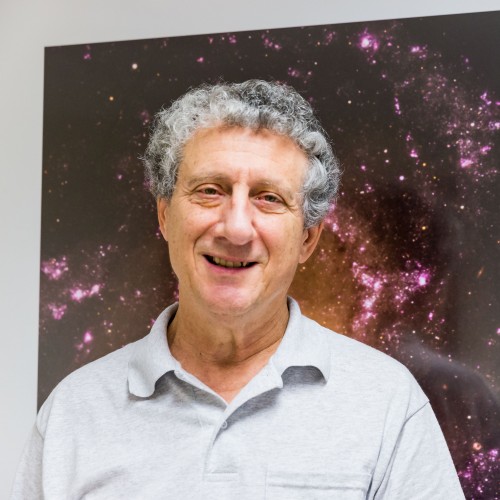- Date: 13 Aug 2015
- Comments: (0)
- Categories: For Astronomers
On Thursday, August 13th at the International Astronomical Union (IAU) at 6:30pm, Tom Geballe – Gemini North Astronomer, will explain the role played by H3+ in interstellar clouds. He is one of five Invited Discourses given during the two week conference.
Research in astronomy includes events lasting as short as seconds to as long as billions of years. It also encompasses phenomena critical to the characteristics of the universe ranging in scale from sub-atomic particles to the expanse of the entire universe. The triatomic hydrogen ion, H3+, the smallest and simplest polyatomic molecule, plays a critical role in the field of interstellar gas phase chemistry. H3+ is the starting point of reaction chains that result in the production of many of the molecular species observed in interstellar clouds.
During his talk, Tom Geballe will recount the history of the fascinating H3+ ion, from its discovery in a laboratory over a century ago, to the appreciation of its critical role in gas phase chemistry, to its discovery in space and the realization that measurements of it reveal crucial information about interstellar environments that cannot be easily learned in other ways.
H3+ ions are important for four key reasons. First, it is created whenever molecular hydrogen and cosmic rays are both present, such as in dense and diffuse clouds. Secondly, H3+ is intrinsically stable; it is as tightly bound as molecular hydrogen. Third, it is extremely reactive. Finally, there is no energy barrier to prevent it from reacting with species it encounters. Because H3+ is so highly reactive, its steady state abundance is very low, making it somewhat challenging to observe.
Spectroscopy of H3+ has resulted in the discovery of an important but previously unrecognized gaseous environment at the center of the Milky Way, provides constraints on the spectrum of low energy cosmic rays in the Galaxy, and will provide unique information on interstellar gas in external galaxies.
In addition, H3+ is the dominant infrared line emitter in the aurorae of three of the four gas giant planets in the solar system and is expected to produce bright line emission in the upper atmospheres of giant exoplanets located close to their stars. H3+ may play a significant in the formation of stars in the early metal-free universe. Thus, future astronomical research utilizing the unique properties of this simple molecular ion is destined to contribute significantly to our knowledge in a wide range of areas.






